#11TH-12TH DYNASTY
Text
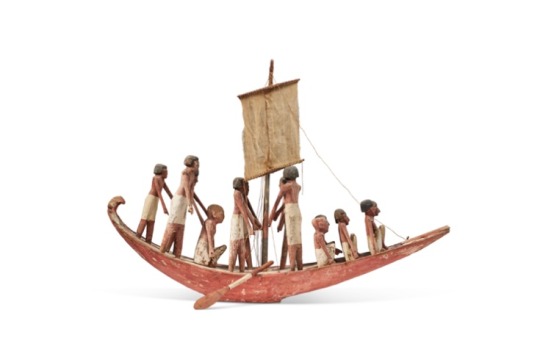

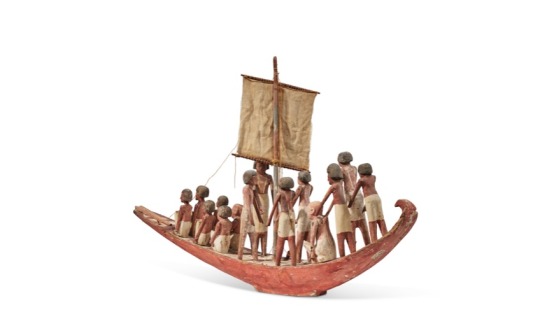
AN EGYPTIAN GESSO-PAINTED WOOD FUNERARY MODEL OF A BOAT
MIDDLE KINGDOM, 11TH-12TH DYNASTY, 2087-1759 B.C.
#AN EGYPTIAN GESSO-PAINTED WOOD FUNERARY MODEL OF A BOAT#MIDDLE KINGDOM#11TH-12TH DYNASTY#2087-1759 B.C.#ancient artifacts#archeology#archeolgst#history#history news#ancient history#ancient culture#ancient civilizations#ancient egypt#egyptian history#egyptian mythology#egyptian art
408 notes
·
View notes
Text

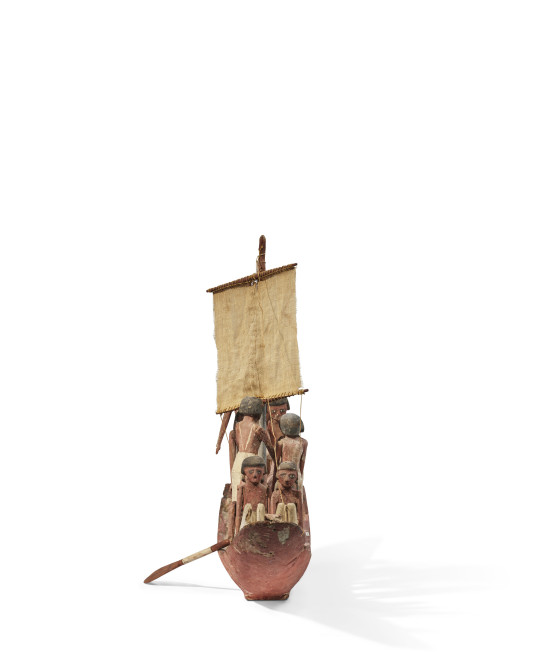


An Egyptien Gesso-Painted Wood Funerary Model of a Boat,
Middle Kingdom, 11TH-12TH DYNASTY, 2087-1759 B.C.
31 ¼ in. (79.5 cm.) wide.
Courtesy: Christie's / Mougins Museum of Classical Art.
#art#history#design#style#archeology#sculpture#figure#egypt#paint#gesso-painted#wood#funeral#boat#middle kingdom#11th Dynasty#12th dynasty#christie's#mougins museum
32 notes
·
View notes
Photo






Cupstand, 960-1127
Song dynasty, China
Qingbai porcelain cup and cupstand
Height: 13.8cm, Diameter: 12.4cm
High-fired ceramics from China were prized in Korea, where many have been excavated from tombs. Later Korea began to produce green-glazed and white-glazed wares of its own.
Collection of the Victoria & Albert Museum
#victoria and albert museum#art#art history#ceramic#porcelain#qingbai#celadon#Song dynasty#chinese#korea#10th century#11th century#12th century
2 notes
·
View notes
Text



Turqouise inlaid bronze dagger axe (ge), China, Late Shang Dynasty 12th-11th century BC
from Sothebys
4K notes
·
View notes
Text

Statuette of a Hippopotamus
In ancient Egypt, faience Hippopotamus statuettes held significant symbolism. These statuettes, commonly known as “hippopotamus figurines,” were crafted from faience, a type of ceramic material.
The symbolism associated with these figurines is primarily linked to the protective and apotropaic (warding off evil) qualities attributed to the hippopotamus in Egyptian culture.
The hippopotamus was considered a dangerous and unpredictable creature due to its aggressive nature and its association with the Nile River, which was vital for agriculture and daily life in ancient Egypt.
Middle Kingdom, 11th to 12th Dynasty, around ca. 2000 BC. Now in the Kunsthistorisches Museum, Vienna. INV 4211
Read more
200 notes
·
View notes
Text

Bowl with Flared Rim and “Partridge-feather” Mottles
China, Northern Song (960–1127) or Jin dynasty (1115–1234), late 11th/12th century
33 notes
·
View notes
Photo

after jeremy’s surprise appearance on jimmy kimmel last night we can expect to see him at the premiere of rennervations tonight at the regency village theatre in los angeles tonight (11th april) and of course the show airs on disney+ tomorrow (12th april)
i was interested in his comment on kimmel about his year ahead now being clear. i guess this means that he still has a lot of recuperating to do. he was due to be in a biopic about pulitzer prize winning journalist david armstrong and imdb had him rumoured to be appearing in avengers: the kang dynasty
i was worn out just watching him on kimmel last night so expect he will be taking it steady behind the scenes. not sure how easy it is to keep that man down but i am sure his mum will sit on him if necessary!
96 notes
·
View notes
Photo

Liao dynasty, China - Seated Guanyin Bodhisattva, 11th-12th century
27 notes
·
View notes
Text
Hi everyone,
In honor of my TOG fic “Their souls were knit together (and he loved him as himself)” reaching 10k (thank you readers!!) I wanted to compile my (80+) resource links I used during the plotting stage and throughout the fic - divided by category as best as I could manage.
In case you’d like additional resources, please check out @actualmermaid historical resource upload here, and/or the The Old Guard Character Resource Hub. Here’s a list of books as well:
Genoa & the Genoese 958-1528 ( x )
The Crusade Indulgence: Spiritual Rewards and the Theology of the Crusades, c. 1095-1216 ( x ) - a post with excerpts linked below
Housing the Stranger in the Mediterranean World: Lodging, Trade, and Travel in Late Antiquity and the Middle Ages ( x )
The rest under the cut in case you’d like to avoid potential spoilers (nothing descriptive)
For Genoa
San Siro ( x )
San Lorenzo ( x ) & St. John the Baptist ( x )
The Mahdia Campaign of 1087 ( x )
Nicolò as a Genovese crossbowman ( x ) ( x )
For Mahdia
Yusuf’s potential backstory with Mahdia ( x ) ( x ) and the Zirid dynasty ( x )
And his family’s intergenerational trauma in relation to the Battle of Haydaran in 1052 ( x )
For the Crusades
Some other ways a non noble Nicolò might have found himself in the Crusades ( x ) ( x ) ( x )
General timeline of the first crusade ( x )
The Siege of Antioch ( x ) ( x ) ( x ) ( x ) ( x )
The Siege of Jerusalem ( x ) ( x ) ( x ) ( x )
Visual maps of the city of Jerusalem and surrounding area ( x ) and general climate ( x )
For Constantinople
Daily life in the city ( x ) ( x ) ( x )
Procession of the Theotokos icon ( x )
Maps of the city from that time ( x ) ( x )
Their apartment and general housing ( x )
Little Hagia Sophia ( x )
Church of Sts Sergius and Bacchus ( x ) - and why that would have been meaningful to Nicolò ( x ) as the setting for their Adelphopoiesis ( x ) & here are the Byzantine instructions for it ( x )
For Islamic spiritual practices
Barzakh ( x ) & Jinn ( x ) (both referred to in a blink and you’d miss it sort of way)
Qur’an scroll ( x ) - technically a 19th century copy, but was using it as a visual reference
Islamic calendar for that year ( x ) & the significance of Yusuf’s first death of rajab ( x )
The verse Yusuf reflects on when he internally refers to Nicolò as his dearest ( x )
The verse Nicolò inscribed on Yusuf’s wedding present ( x )
For Catholic spiritual practices
Lay Orders (what used to be called Third Order) for Nicolò to be an oblate ( x )
Eleusa icon (a gift he received from Brother Gabriel) ( x ) - here’s a 12th century version ( x )
The cross necklace gift Nicolò received before leaving Genoa ( x )
Excerpts from the book linked above about how indulgences played a part in the Crusades ( x )
Lenten practices in the middle ages ( x )
Some Bible verses Nicolò reflects on during his love confession ( x ) ( x )
For some interfaith dialogue moments
The Canticle of Zechariah in the Liturgy of Hours ( x ) & Verse 95 for corresponding references to the dawn ( x )
Why Zechariah is important in both faiths ( x )
Encouragement for open dialogue and friendliness ( x ) the rights of Non-Muslims as laid out in the Constitution of Medina ( x ) and protection via the Testament of Muhammed ( x ) though there are some doubts to the authenticity
Lent & Ramadan similarities ( x ) ( x )
Interfaith marriage rights between Christians and Muslims from Muhammed ( x )
For some other historical context
Context for same sex attraction in the middle ages ( x ) ( x ) ( x ) ( x ) ( x ) ( x )
Some LGTB+ historical figures and Saints Nicolò might have been aware of ( x ) ( x )
Brother Gabriel from chapter two was based on Marina the Monk ( x )
Wiki about illiterate popes ( x )
11th-12th century trade maps ( x )
Tunisian Arabic ( x )
The Great Schism of 1054 ( x )
The Seljuk Empire ( x )
The Byzantine-Venetian treaty of 1082 ( x )
A poem by Abu Nawas that Yusuf reflects on before the love confession ( x )
For the Biblical references and significance to Nicolò of Gortyn/Crete ( x ) and some visual references ( x )
Why Chandax as a honeymoon site would have been comfortable for them both ( x ) & ruled by the Byzantine Empire at the time of their visit ( x )
The book Yusuf gave to Nicolò as a wedding present ( x ) & some context ( x )
#thank you readers!#their souls were knit together fic#tog fic#tog#the old guard#the old guard fic#tog resource#the old guard resource#immortal husbands#joe x nicky#yusuf x nicolo#tog joe#tog nicky#yusuf al kaysani#nicolò di genova#for queue
49 notes
·
View notes
Text

Turquoise-inlaid bronze dagger axe, China, Late Shang Dynasty 12th-11th century BC
source: memories-of-ancients
8 notes
·
View notes
Text
Parts 1 and 2 are in. Now we have the final round: Disney movies (idea courtesy @sleepanon)
Dates based on the following sources, which I can't be bothered to fact-check: [x] [x] [x] [x]
#i decided not to touch Aladdin or Emperor's New Groove or Lion King because I feel like those could get hairy pretty quick#medieval studies#medievalisms#disney#medieval#jam posts
32 notes
·
View notes
Text

“Unique” Medieval Gold Ring Found in Poland
An elaborately decorated medieval gold ring, likely to be from the 11th or 12th century, has been discovered buried beneath Wawel Castle, the former seat of Poland’s kings in the city of Kraków. It is the only one of its kind ever found on Polish territory.
“Wawel never ceases to surprise us,” wrote the castle museum on social media while announcing the “exceptional discovery” on Monday.
The ring is decorated with opposing faces, making it extremely unusual. Only a few early medieval gold rings have been found in Poland and they are devoid of ornamentation or have simple geometric patterns.
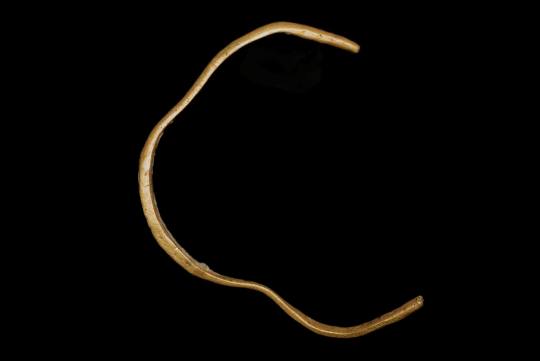

That makes the latest find “unique”, says Jerzy Trzebiński from the castle museum’s archaeology department. “This is the only example in which human images (or figural ones in general) are depicted on an early medieval ring from Poland.”
He also notes that the item contains no references to Christianity (which had begun to be established in Poland from the 10th century) and suggests that the two faces could represent Janus, the two-faced Roman God.
Given that the form of the ring is typical for that period in Poland, Trzebiński believes it was probably a local product and could have belonged to a member of the elites under the Piasts, Poland’s first ruling dynasty from when the state was established in the 10th century until the 14th century.
The item was discovered during archaeological research in the basement of the so-called Danish Tower (Wieża Duńska), one of the castle’s four residential towers.


It was built from the late 14th to early 15th century on the orders of King Władysław II Jagiełło as part of the reconstruction of a previously existing tower. The tower’s facade was then added in the 16th century.
The building took its name from one of its first guests, Eric, king of Denmark, Sweden and Norway (often known as Eric of Pomerania). He stayed there in 1424 while attending the coronation of King Władysław’s fourth wife, Sophia of Halshany.
The ring was found on top of the remains of a former stone structure, probably a defensive rampart. The history of Wawel Castle dates back to the 11th century, but long before then the hill that it sits upon had been an important seat of power.
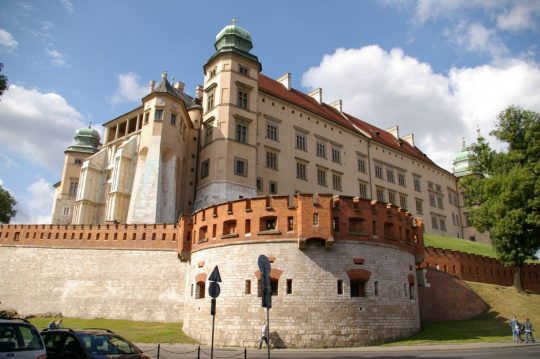
#“Unique” Medieval Gold Ring Found in Poland#Wawel Castle#golf#gold jewelry#ancient artifacts#archeology#archeolgst#history#history news#ancient history#ancient culture#ancient civilizations#medieval history
65 notes
·
View notes
Text
Introduction to Donat - abridged history
The REPUBLIC OF DONAT (Donatese: Република Донат / Republika Donat) is a constituent country of the State Union. It lays on the peninsula of Donat and its neighboring isles in Ripiero. Donat borders the Rutherish Commonwealth to its southwest and the Mercantile Republics of Kruhasta to its southeast. Donat has a population of around 68 million, with the city of RADOGOST being its largest and capital city. It is divided into 14 administrative divisions: 11 populates and 3 constitutional territories.

Throughout its history, Donat has consisted of many independent realms with a shared cultural and linguistic identity, though never politically unified. The people of Donat - the Donatians - departed from Kanita and settled Ripiero through the 11th and 12th centuries, establishing chiefdoms directly correspondent to their families. These chiefdoms would further consolidate into realms ruled by dynasties, which would come to form the first kingdoms of Donat. These kingdoms are, partially, the basis of Donat's modern populates.
Donat would find itself under Rutherish occupation in the 17th century, but would finally break free during the Crimson Revolution of 1956. Initially starting as small communal protests, the uprisings that formed the Crimson Revolution would take on an armed spirit and would force the Rutherish out of the land for good, aside from the region of West Pokoska, which remains in Rutherish hands to this day.
An independent government would be formed by a man called Lazar Karaslav - the most prominent figurehead of the revolution. This would mark the beginning of a state known as the Union of Socialist Donatian Republics, or the USDR for short. Although defined as republican and popular, the USDR was highly dictatorial and allowed for little naysaying. The autonomy of each Socialist Donatese Republic was very limited, and democratic elections were not present in the state. Despite this, the USDR's policies of industry nationalization was very economically beneficial to Donat, seeing as all factories were in control of Rutherish businessmen before the revolution.
Donat's later modern history would be a period of turbulence and frequent change of regimes. After Karaslav's death, the country was reorganized into the United Syndicates of Donat and began progressing towards the path of democracy. In 1990, Donat formed a union called Slavia with the country of Illjika. During this time period, the union was more of a loose confederation than a proper state. Things would change in 2025 with the Blackshirt Revolution, which would transform Slavia into a one-party totalitarian dictatorship under the rule of Sonya Kremenobor, hailing from the city of Karlov in Donat. This type of governance would last a mere 5 years, but would forever transform the economic landscape of the two countries.

Coat of arms of the Confederation of Slavia from 2030 to 2049.
With the fall of the Blackshirt regime, Slavia was reorganized as a stable confederation whose constituents were politically equal. The Confederation of Slavia, which lasted until 2049, was a representative democracy with a centralized military, but under no single leader. The country of Hrozava would join the confederation in 2033 and would vote to leave it in 2049, which gave way to the abolishing of the confederation. In its place, a new state was - finally - erected once more, the State Union of Donat & Illjika.

Coat of arms of the State Union of Donat & Illjika.
Today, Donat remains to be a constituent state inside the State Union. It is a modern and developed country with a functional but frequently unstable democracy. From constitutional crises to weird critters in your garden, Donat remains to be the bastion of modernity and industrial progress in Ripiero.
this is the most boring part of the introduction and even then its totally abridged but if youre a little nerd read up on the full history here
Interested in the world that surrounds Donat? There's plenty more! Learn more about Ulina and join our Discord server here: ULINA (linktr.ee)
Next post: Vera, the ancestral religion of Donatians
10 notes
·
View notes
Photo

MWW Artwork of the Day (5/6/23)
Liao/Jin Dynasty artist (Chinese, fl. 1000-1200)
Guanyin of the Southern Sea (c. 11th-12th c.)
Wood sculpture w/ multiple layers of paint, 241.3 x 167.64 x 110.49 cm.
Nelson-Atkins Museum, Kansas City MO (William Rockhill Nelson Trust)
Bodhisattvas are deities who, unlike Buddhas, forgo Nirvana until that time when all sentient beings shall have attained enlightenment. Of these, Guanyin became the most popular as the deity of mercy and compassion, answering prayers and protecting the faithful from catastrophe. Guanyin sits in the position of Royal Ease on a mossy rockery representing Potalaka, an island in the southern sea that is the deity's home. Originally the rockery probably continued up and around the image creating a grotto by the sea. This image epitomizes the new humanism that begins to imbue Buddhist sculpture during the 11th and 12th centuries. The figure is majestic, yet it also exudes a benign calm and warmth that make it more approachable and emotionally appealing than earlier images.
14 notes
·
View notes
Text
The more I think about and familiarise myself with it, the more I come to think that Japanese Heian culture did not emerge solely through an internal isolationist process. Looking at late tang/five dynasties/early song iconography in Dunhuang, the Famen Temple garments and comparing to 11th-12th century Heian scrolls like Prince Shotoku, the Genji Monogatari Emaki, the Northern Fujiwara clan Chuson-Ji temple donations, and other miscellanea and there are so so many commonalities and emerging trends- increasing use of goldwork in textiles, bigger, often giant floral/geometric medallion motifs, wider proportions, low hanging sleeves, stiffened rather than soft headpieces, more prominent cross-collar garments with wide collars, e.t.c. In addition to the well documented monastic exchanges which took place, bringing updated tea culture and mainland chinese buddhist texts and schools of thought. Which is interesting because so much of what you hear is just the opposite- that the Heian period was when Japanese culture finally "properly" developed its own aesthetic sense and practice. But there has always been continual economic and cultural exchange in east asia! You can't really understand any state or region without acknowledging that, but people keep trying to do so with Japan, for what I think are underlying very problematic reasons
5 notes
·
View notes
Text

Rectangular Cauldron
China, Shang dynasty ( about 1600–1046 BC ), 12th/11th century
Unlike most bronze vessels whose shapes were derived from prehistoric ceramic forms, this type of rectangular container was invented by Shang bronze artisans. Each side features a pair of profile birds with long, trailing tailfeathers. The black material in sunken areas of this design contains carbon. This filler is common to many Shang bronzes and seems to have been deliberately applied after casting in order to emphasize the surface decoration.
23 notes
·
View notes